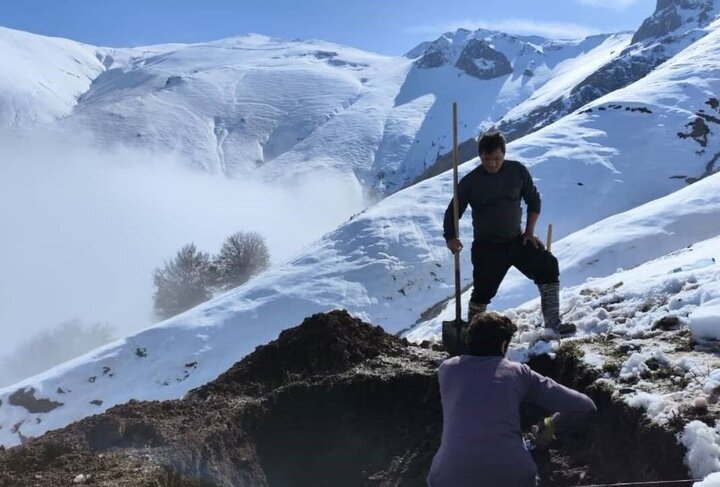Historical Industrial Workshop Discovered in the Heights of Masuleh

The Director General of Cultural Heritage, Tourism, and Handicrafts of Gilan Province announced the discovery of a historical industrial workshop with evidence of metallurgy activities at an altitude of 2,500 meters in the city of Masuleh.
According to Mehr News Agency, Vali Jahani, Director General of Cultural Heritage, Tourism, and Handicrafts of Gilan, stated:
“Currently, archaeologists and other specialists, as part of a series of studies on the historical landscape of Masuleh for its UNESCO World Heritage nomination, have uncovered new evidence of industrial activities dating back to the Islamic Middle Ages.”
Jahani added that ongoing archaeological excavations in the Siyapasieh site of Masuleh, led by Behzad Ali Talash, have revealed significant findings related to iron smelting and metallurgy, including kilns. These discoveries could open a new chapter in understanding regional and interregional social interactions.
Highlighting the importance of these findings in analyzing settlement patterns and the subsistence economy of the region, Jahani noted that they could also shed light on broader regional interactions.
He explained that iron was a strategic material in ancient times, and its production or possession could generate power and social welfare for any region or government, serving as a pivotal factor in social and political interactions.
Jahani emphasized that the primary goal of these studies is to uncover evidence of metalworking, iron smelting, and steel production during the Islamic era. This could position Masuleh as a significant historical center of metallurgy, contributing significantly to its UNESCO World Heritage nomination.
He further mentioned that, according to historical documents, Masuleh was managed under the royal armory (Qurkhaneh) during the reign of Fath-Ali Shah Qajar, tasked with producing cannonballs.
The vast amount of metallurgical evidence in the area suggests production exceeding local needs, and specialists are currently studying the scope and nature of these interactions using laboratory and comparative methods.
Jahani also remarked that archaeological studies of Masuleh’s cultural landscape are ongoing to complete the necessary documentation for its World Heritage nomination.
Background on Masuleh
Located 25 kilometers southwest of Fuman County, Masuleh is renowned for its unique stepped mud-brick architecture nestled in the mountains. Its picturesque setting includes rivers, tea gardens, and vibrant geranium-filled wooden windows. Masuleh was listed as a National Heritage Site of Iran in 1975 (registration number 1090), and efforts for its World Heritage status began in 2011.
In 2007, Masuleh was temporarily listed by UNESCO to safeguard it against alterations and damages. Over the years, numerous national and international experts have visited and conducted assessments of this historical gem.
In October 2021, Masuleh earned the title of a “Complete City” from international evaluators, marking a significant step towards its World Heritage registration. On September 6, 2022, a UNESCO evaluator began the initial registration process, with results expected at the 45th UNESCO World Heritage Committee meeting in September 2023.
Recent Developments
While the registration of Masuleh remains pending, on September 17, 2023, the UNESCO Committee registered Iran's historic caravanserais, including Gilan’s 600-year-old Titi Caravanserai, as the country’s 27th tangible cultural heritage on the World Heritage List.
New Discoveries at Siyapasieh
Siyapasieh is located at an altitude of 2,500 meters in the southern mountains of Masuleh, in a remote, snowy area. Last month, new archaeological findings revealed evidence of sponge iron smelting (a direct reduction of iron ore without melting) dating back to the Parthian period in Masuleh’s historical site.





